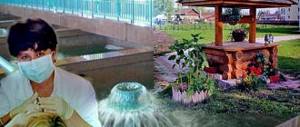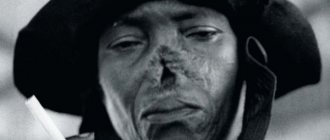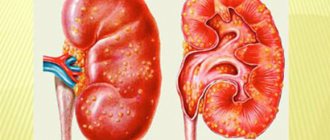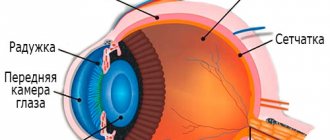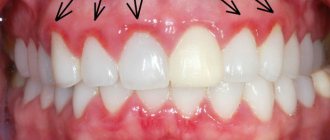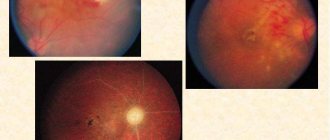The article will focus on cholera, the causative agent of which is quite persistent in the environment. This is a disease known to mankind for quite a long time. The reasons for its appearance were identified only recently, which cannot be said about the existence of the pathogen itself. Plague, anthrax and cholera are particularly dangerous diseases that are highly contagious, severe and have high mortality. Today they are the basis for the creation of biological weapons. And although modern statistics do not give cause for concern, minimal knowledge about dangerous diseases and their causative agents can be useful.
Historical sketch
Humanity has experienced cholera pandemics at different periods of its existence. Hippocrates (460 BC) wrote about this disease. It is to him that we owe the name of the disease - from the ancient Greek word “chole”, which means bile. Doctors of Alexander the Great (365-323 BC) described this disease as a disaster that befell the troops during his campaign in India. There is a theory that it was cholera that forced the great commander to abandon his plans and turn back. Until the early 19th century, the disease was common in southern Asia and India. From 1817 to 1975, the world experienced seven cholera pandemics, which claimed more lives than outbreaks of any other disease.
It was in the mid-19th century that large-scale research began to determine the causative agent of cholera. The infection reached Europe through wars and along trade routes from Asia and Egypt. It was to Egypt that a research expedition went in 1881, which included the famous bacteriologist Robert Koch (1843-1910). It was they who discovered the causative agents of cholera and tuberculosis (vibrios and Koch bacilli). Robert Koch also developed the first preventive recommendations for this disease.
In accordance with the list of the World Health Organization, the bacteria that cause plague and cholera, as well as anthrax, are classified as pathogens that cause especially dangerous diseases.
Cholera pandemics
The first pandemic began in 1816 in the Republic of Bangladesh. Thousands of British soldiers, millions of Indians and one hundred thousand residents of the island of Java became victims of cholera. In Russia in the 19th century, cholera Fr. Then she began her march in France, Germany, Great Britain, leaving behind up to 60 thousand corpses in each country. Once in the USA and Canada, it killed about 250 thousand inhabitants.
The last pandemic was declared in 1962. It was then that the El Tor vibrio appeared on the scene. By 1970, the pandemic had affected 39 countries. It claimed the lives of more than 40 thousand people.
The global epidemiological situation leaves some caution. Thus, the cholera epidemic in Japan in June 1977 had spread to the Middle East by August. It became the largest epidemic in the region in the previous 20 years. In one month, cholera swept through Syria, Jordan, Iran and 10 other Middle Eastern countries.
Knights of the fight against cholera
As already mentioned, Robert Koch in 1883 described in detail Vibrio cholerae and the symptoms of the disease. In the same year, the future Nobel Prize winner for the study of immunity, Ilya Ilyich Mechnikov (1845-1916), voluntarily accepted a culture of Vibrio cholerae in order to study the course of the disease from his own experience. Surprisingly, he not only recovered, but after the illness his eyesight and character improved.
However, the title of discoverer of the cholera vaccine belongs to bacteriologist Nikolai Fedorovich Gamaley (1859-1949), who worked at the Odessa Rabies Center. He tested his vaccine on himself and his wife. His research was continued by his student Vladimir Aronovich Khavkin (1860-1930), who also tested his vaccine on himself. It was their vaccines that turned out to be the most successful “anticholera antidotes.”
Cholera in children
The course of the disease in children has some differences, which is due to rapidly developing dehydration and the appearance of symptoms of secondary damage to the central nervous system, which is manifested by severe lethargy, convulsions, clonic convulsions and impaired consciousness, and in severe cases - the development of coma. Cholera is most severe in children under 3 years of age. An additional complication is the difficulty in determining the initial degree of dehydration, since it is impossible to rely on the relative density of plasma due to the relatively large volume of extracellular fluid.
Features of clinical symptoms in children include frequent fever, severe adynamia and apathy, a tendency to epileptiform seizures, and the rapid development of disorders of water-mineral metabolism. Its subsequent manifestations, as in adults, depend on the adequacy/timeliness of rehydration therapy. With adequate replacement of fluid/electrolyte losses, the physiological functions of the child’s body are normalized and recovery occurs relatively quickly.
Cholera is especially severe in newborns and children in the first year of life: intoxication develops quickly, and dehydration occurs critically quickly. Symptoms of damage to the cardiovascular system and central nervous system appear, which is manifested by generalized convulsions to tetany with a forced characteristic position of the torso and limbs, sweeping movements of the head and limbs, pronounced convulsions. The course of the disease is severe, often accompanied by impaired consciousness with symptoms of stupor and coma. There is a high risk of bacterial complications and the development of mixed infections. Mortality reaches 20%.
Bacteria or viruses?
Cholera is caused by Vibrio cholerae, a gram-negative anaerobic bacteria. The vibrio has the shape of a curved rod and is equipped with a flagellum. The causative agent of cholera, the microbiology of which has been studied quite well, has a genome of two chromosomes and reproduces in the plankton of fresh and salt water bodies. More than 150 serotypes of Vibrio cholerae are known. Each serotype of the causative agent of cholera belongs to opportunistic organisms and differs in somatic antigen. Depending on the serotype and route of infection into the body, the course of its disease differs. But only two serotypes cause symptoms of the disease.
“Classical” cholera is caused by vibrio serogroup O1, in which two biotypes are distinguished - classic (Vibrio cholerae biovar cholerae) and El Tor (Vibrio cholerae biovar eltor). In 1993, a cholera outbreak in Southeast Asia was caused by a previously unknown Vibrio called Bengal (serotype 0139). These data indicate a possible mutation of Vibrio cholera. The remaining serotypes of Vibrio cholerae do not cause disease in humans. They are often found in open bodies of water and are called cholera-like or pseudocholera. Some are causative agents of animal diseases and isolated cholera-like human diseases.
The bacterium that causes cholera is stable at temperatures from 16 to 40 degrees and does not die when frozen. For a long time, vibrio remains viable in water bodies, personal belongings and feces of the patient. Vibrios die when boiled, under the influence of disinfectants containing chlorine.
Serological methods.
They are used mainly for retrospective diagnosis, as well as to identify the tension of the immune system in people who have recovered from the disease. The titers of agglutinating antibodies in RA and RPHA are determined; they are considered positive at a titer of 1:40 or higher, but they can be detected no earlier than on the 6-7th day of illness. Even more specific are methods based on determining the titer of vibriocidal antibodies or antitoxic antibodies (cholerogen antitoxins).
- CHOLERA, sources, pathogen, symptoms, signs, treatment, prevention, Emergency care
Etiology, epidemiology and pathogenesis of choleraClinical picture of choleraTreatment and prevention of cholera
Diagnosis The diagnosis of cholera is based on data obtained during a clinical examination of the patient, taking into account the epidemiological history, and is confirmed by the positive results of bacteriological studies on the isolation of Vibrio cholerae from feces, vomit, and duodenal contents. With the classic symptomatology of cholera, when the patient clearly shows the main symptoms of intoxication, diarrhea preceding vomiting, convulsions, drop in temperature, anhydremia, asphyxia, anuria, etc., the diagnosis can easily be established on the basis of the clinical picture. It is difficult to diagnose atypical cholera (in children, the elderly, patients suffering from chronic diseases). Microbiological diagnostics. The main method for diagnosing cholera is bacteriological
analysis.
Without it, based only on clinical observations or serological survey data, the diagnosis
of cholera cannot be considered reliable.
Bacteriological
analysis is used to diagnose typical and atypical cases of cholera, identify vibrio carriers, in particular among convalescents, workers in food facilities and child care institutions, as well as in the study of corpses and environmental objects (water, food products, contaminated objects, etc.).
Research should be carried out as quickly as possible. The success of bacteriological analysis depends primarily on the correct collection and timely delivery of material to the laboratory. Bacteriological
analysis includes: 1) microscopy of smears from the test material, stained with Gram or diluted carbol fuchsin;
2) inoculation of material on liquid enrichment media (1% peptone water, bismuth-sulfite medium, etc.) and solid elective media (alkaline agar, Dieudonne’s medium, Aronson, etc.) regardless of the microscopy results; 3) identification of the isolated culture. A pure culture of Vibrio cholerae can be isolated at any stage - from direct inoculation of material or in subcultures from enrichment media. Typically, a preliminary diagnosis is made after 5-6 hours, and a final diagnosis after 24-36 hours. The diagnosis is delayed if an atypical culture is isolated, the identification of which requires additional research (see Vibrios). Among the accelerated methods for detecting cholera vibrios in the secretions of patients and on environmental objects, the following are currently recommended: luminescent serological, micro- and macroagglutination with native material, the reaction of increasing bacteriophage titer, dark-field microscopy in the presence of cholera serum and some others. However, accelerated methods should be considered indicative only. For a final answer, it is necessary to isolate a pure culture of the cholera causative agent and identify it based on a set of characteristics. Differential diagnosis of cholera is carried out with many infectious diseases and various poisonings with chemical poisons. One of the first places is occupied by food toxic infections (see). Their clinical picture may be similar to cholera, especially with its gastroenteric phase. However, vomiting during toxic infections is accompanied by nausea and is usually preceded by diarrhea, and pain (abdominal pain) is pronounced. The disease
is often accompanied by a febrile reaction;
there is no such pronounced dehydration of the body, widespread and painful convulsions as with cholera. Diagnosis is aided by examination of smears from feces and vomit, and serological studies. The initial period of dysentery, unlike cholera, is characterized by a febrile reaction, tenesmus, cramping abdominal pain, scanty and frequent stool with mucus and blood. With botulism, the onset of the disease is acute, with nausea, vomiting, dizziness, hypothermia, and cold sweats. Recognition is facilitated by the severity of neurological symptoms (muscle paralysis, diplopia, anisocoria, mydriasis, dysphagia, hoarseness). Anamnesis data and laboratory test results are taken into account. In terms of the clinical picture, cholera is similar in a number of ways to such diseases as severe forms of tropical malaria (see), mosquito fever (see), amebiasis (see), balantidiasis (see), etc. Finally, in persons characterized by increased mental reactivity, in a cholera environment, so-called mental cholera
with a clinically similar symptom complex can be observed.
Differential diagnosis
of cholera is also carried out with poisoning by mushrooms, castor beans (ricin), hellebore (glycosides), young potatoes (solanine), as well as poisoning with inorganic and organic poisons (arsenic compounds, methyl alcohol, antifreeze, butifos). The clinical picture of mushroom poisoning is sometimes similar to algide in cholera, but in the first case there is severe abdominal pain. Anamnestic data (consumption of mushrooms, connection with the cultivation or processing of castor beans, hellebores, etc.), as well as the absence of indications of contact with the source of cholera infection and negative results of bacteriological studies, help to establish the diagnosis. In case of poisoning with chemical poisons, as a rule, a group nature of the diseases is observed (treatment of cotton with butifos). The results of chemical studies and the absence of Vibrio cholerae in feces and vomit help in establishing the diagnosis of the disease.
LABORATORY DIAGNOSTICS OF CHOLERA AT THE CURRENT STAGE
Bacteriologists of the Laboratory of Particularly Dangerous Infections
,
FBUZ "Center for Hygiene and Epidemiology in the Omsk Region"
Cholera, plague and anthrax, which have claimed millions of lives, along with viral infections, currently continue to pose a particular danger to Russia. Over the course of just over 100 years, almost every continent was affected by six pandemics, the last of which ended in 1926.
It is now generally accepted that at least the 5th and 6th pandemics were caused by V. cholerae O1 serogroup classical
biovar.
In 1905, on the Sinai Peninsula, at the El Tor quarantine station, vibrios cholerae of the O1 serogroup were isolated from pilgrims suffering from diarrhea, which differed from the classic ones in a number of phenotypic properties. Based on the name of the station, these vibrios were classified as a new biovar - Eltor
.
- Cholera: pathogen, transmission routes, symptoms, diagnosis, treatment, prevention. Specialist consultations
In 1992, unexpectedly in India and Bangladesh, a cholera epidemic was caused by non-O1 serogroup Vibrio cholerae. Analysis of these vibrios showed that they belong to the previously unknown O139 serogroup - a synonym for "Bengal", given the origin of this strain. The powerful epidemic potential of the pathogen of the new serogroup raised fears at that time that V. cholerae O139 could become the causative agent of the next 8th cholera pandemic. The emergence of a new variant of the cholera causative agent required the creation of new diagnostic tools to ensure the epidemiological well-being of the population.
Despite the constant improvement of the material and technical base of laboratory diagnostics, bacteriological studies continue to occupy a leading place in the diagnosis of cholera.
Classic bacteriological analysis is labor-intensive and time-consuming. Research goes through a number of stages, each of which ends with a certain result. They are identified to determine their belonging to the genus Vibrio, the species Vibrio cholerae to the corresponding serogroup (O1, O139 or others), as well as to determine the biovar and epidemic significance.
Despite the importance of the bacteriological method, its capabilities have significant limitations, which is associated not only with the rules for collecting material and the ingredients used, but also significantly depends on the characteristics of the pathogenesis of the disease, the localization of the pathogen, and changes in its antigenic structure during the persistence process.
Serological research methods, as a rule, have additional significance, but when conducting operational and retrospective epidemiological analysis, their results can be decisive; they are used to identify specific antibodies in the patient’s blood serum and increase their titer over time. These are mainly variants of agglutination tests, the most widely used of which are RA and RNGA. However, these methods are not used for early diagnosis.
Modern methods include molecular diagnostic studies. It is recommended to use PCR as a specific indication method with extreme caution. It should be taken into account that the identification of specific genes of cholera vibrios in environmental objects does not mean the presence of viable vibrios in the specified sample. Specific DNA can be found either in dead cells or in the form of uncultured forms of the pathogen that are unable to cause disease. In addition, the presence of a fragment of the Vibrio genome within various phages cannot be excluded. In this case, using a positive PCR result without confirmation by isolating a pathogen culture may lead to incorrect results.
Vibrio cholerae can exist in two different ecological niches - in the human body and in the water of open reservoirs. Vibrio cholerae not O1/O139 serogroups isolated from surface water bodies and other environmental objects that do not contain the cholera toxin gene can cause isolated cholera diseases (vibrio carriage) and outbreaks. One of the key places in assessing and forecasting the cholera epidemic situation in Russia is occupied by information on the isolation of Vibrio cholerae from environmental objects.
In order to ensure the sanitary and epidemiological well-being of the population and prevent the importation and spread of cholera in the Omsk region, studies are carried out annually within the framework of State Work on the circulation of vibrio cholerae from stationary points on the basis of the laboratory of especially dangerous and naturally occurring infections of the Federal Budgetary Institution "Center for Hygiene and Epidemiology in the Omsk Region" "
Bacteriological testing for cholera of samples from environmental objects in the country is carried out taking into account the types of territories. The Omsk region belongs to the territories of type III, subtype B, where there is a risk of outbreaks and spread of this infection.
- Private MB (except mushrooms) / lesson 7 Vibrios. Cholera
The locations for water sampling for bacteriological testing for the presence of Vibrio cholerae and the number of points are determined for each surface reservoir, which are agreed upon with the Rospotrebnadzor Office. Every week, in July-August, water samples are taken from 20 points in rural areas of the region and from 10 stationary points in Omsk. Service specialists prepare a passport for each stationary point.
In the 2014 epidemic season, during epidemiological monitoring for the period from July to August inclusive, 44 cultures of V. cholerae not O1/O139 were isolated and confirmed. The crops were isolated from 19 stationary points of 5 open reservoirs of the Omsk region, of which: 11 - water from category I reservoirs used as sources for drinking and domestic water supply in sanitary protection zones and water intakes, 2 - places of discharge of household wastewater, sewage treatment plants, 4 - places of organized recreational water use (beaches), 2 - lakes.
The monitoring results do not exclude the possibility of the formation of an endemic focus due to changes in climatic conditions (increasing temperature, increasing the duration of the warm period), creating favorable conditions for the development of Vibrio cholerae.
Published in the magazine “Rospotrebnadzor in the Omsk Region”, No. 4 for 2020
Complain
Subscribe to our newsletter:
- Tsological studies in laboratory diagnostics
- The effectiveness of introducing new technologies into clinical laboratory diagnostics using the example of laser flow cytometry
- Epidemiological surveillance, laboratory diagnosis and prevention of norovirus infection
- Loratory diagnosis of the acute period of traumatic illness in polytrauma. Abstract
- Improvement of laboratory diagnostics of onychomycosis based on the polymerase chain reaction method. Abstract
How do vibrios enter the body?
The causative agents of cholera enter the stomach through the oral-fecal or household contact route. You can become infected through water or food. The source of the causative agent of cholera can be fresh or lightly salted fish, meat, dairy products, confectionery, vegetables and fruits washed with contaminated water. Infection is possible through dirty hands, dishes or personal belongings of the patient. The source of the causative agent of cholera is always the patient. The infection is not transmitted by airborne droplets. The most dangerous period for infection is contact with a patient in the first days of the disease; by the 3rd week, the patient’s contagiousness decreases. Cases have been recorded where a person was a carrier of vibrio for a year. The most common causative agent of cholera today is Vibrio El Tor, which is characterized by the course of the disease in an erased form and carriage of the disease.
What happens in the body
The bacteria that cause cholera are tropic to the human small intestine. Having penetrated the body, cholera vibrios actively multiply in the small intestine, damage its mucous membranes and produce a huge amount of toxins. It is the toxins (exotoxins and endotoxins) of vibrios, the causative agents of cholera, that cause disturbances in the water-salt balance, dehydration, and disruption of the nervous system. All these effects lead to convulsions and death of the patient as a result of dehydration shock. Toxins of the cholera pathogen quickly enter the bloodstream through damaged intestinal mucosa and cause acute intoxication and weakening of the body, which increases the risk of secondary infections.
Symptoms of cholera
Let us immediately note that the symptoms of cholera are very diverse. In some cases, when cholera is diagnosed, no treatment is required at all (this includes situations with so-called asymptomatic carriage), while in other people cholera leads to severe conditions and death.
The incubation period rarely lasts more than 5-6 days. The onset of the disease is always acute, and the symptoms of cholera are pronounced:
If there is a suspicion that a person is developing cholera, diagnosis, among other things, is based on the clinical picture of the development of the disease. Experts distinguish 4 degrees of cholera:
- I degree – dehydration is mild;
- II degree – patients experience a drop in fluid to 6% of body weight, an acceleration of ESR, and a decrease in the number of red blood cells. Patients complain of dizziness, dry mouth, thirst, and severe weakness. In addition, their fingers turn blue, muscle twitching and hoarseness appear;
- III degree - for severe cholera, treatment involves constant monitoring of blood pressure and body temperature, since a sudden collapse of vital systems is quite possible. Fluid loss reaches up to 9% of body weight, and patients may completely stop urinating. There is a decrease in the concentration of potassium and chlorine in the blood of sick people;
- IV degree - critical loss of fluid, development of a state of prostration, shock. Patients' facial features become sharper, dark circles appear around the eyes, the skin takes on a bluish tint and becomes sticky to the touch. Heart sounds are muffled, there is a sharp drop in blood pressure, and a decrease in body temperature to 34 degrees. Such cholera, the symptoms of which indicate numerous malfunctions in the functioning of basic systems, often ends in the death of the patient.
If you do not consult a doctor in time, even mild cholera can lead to numerous complications: abscesses, pneumonia, cellulitis, erysipelas and phlebitis. For this reason, you should closely monitor for warning signs of cholera after consuming food or water and contact a health care provider immediately for an accurate diagnosis.
Diagnosis of cholera
Simple microscopy methods can establish the presence of the cholera pathogen already in the first hours of infection. How it's done?
The classic method for determining the causative agent of cholera is the method of inoculation on nutrient media. The patient's vomit or feces are taken for analysis. The analysis is ready within 36-48 hours.
Accelerated methods are not sufficiently reliable, but serve only as confirmation of the basic diagnosis.
Bacteriological method.
The main method of laboratory diagnosis of cholera is bacteriological. Materials for research can be: 1) feces of patients; 2) vomit; 3) bile (duodenal intubation during convalescence); 4) infected products; 5) environmental objects; 6) study of the contents of a segment of the small intestine and gall bladder (in the deceased).
The test material is immediately inoculated on an enriched medium (1% peptone water and 1% peptone water with potassium tellurite). There are special, very detailed instructions and orders on the procedure for collecting and delivering material for cholera research, which should be followed. It is advisable that feces and vomit be taken for examination before antibacterial therapy is prescribed.
If cholera vibrios are present in the studied material, a delicate bluish film appears on peptone water within 3-6 hours. When examining the film and characteristic colonies, attention is paid to the mobility, biochemical activity of the isolated pathogens, an agglutination reaction with anticholera serum, and a reaction with a specific phage are performed. All this allows us to identify real cholera vibrios. A positive answer can be received within 18-24 hours or no later than 36 hours.
Symptoms and clinical picture
The incubation period of the disease ranges from several hours to 6 days from the moment the cholera pathogen enters the body. The onset of the disease is always acute and is accompanied by the following symptoms:
- Frequent (up to 15 times a day) and loose stools. The peculiarity is the absence of a fetid odor and rumbling in the stomach.
- Nausea and vomiting.
- Acute pain in the abdominal cavity.
- An increase in temperature to 40 degrees, and then a gradual decrease until a feeling of constant chills.
- Dehydration and feeling thirsty.
- Dizziness, weakness.
The development of the disease does not affect consciousness. After a few hours, cyanosis of the lips and pallor of the skin appear. Dehydration leads to worsened facial features, dark circles under the eyes, and a hoarse voice. Skin turgor decreases, the skin on the hands wrinkles (“washerwoman’s hands”). The heart rhythm is disrupted, blood pressure rises, breathing problems appear, and kidney failure increases.
Treatment of cholera
The main treatment for cholera is rehydration therapy. For exicosis of degrees I and II (fluid loss 1–6%), oral rehydration with glucose-saline solutions, Regidron, Glucosolan and Oralite is prescribed. If oral rehydration is ineffective or impossible and degree III and IV exicosis (fluid loss of 7–10% or more) is performed, infusion therapy with saline solutions (“Quartasol”, “Trisol” and “Lactosol”). Etiotropic therapy is prescribed according to indications; antibiotics of the tetracycline or fluoroquinolone group are used. Regardless of the severity of the disease, enterosorbents (Enterosgel, Laktofiltrum) are prescribed.
Essential drugs
There are contraindications. Specialist consultation is required.
- Doxycycline (antibacterial agent). Dosage regimen: orally, 0.1 g 2 times a day for 5–7 days, or a single dose of 0.3 g.
- Tetracycline (antibacterial agent). Dosage regimen: 0.5 g orally 4 times a day for 5–7 days.
- Ciprofloxacin (antibacterial agent). Dosage regimen: orally, 0.5 g 2 times a day for 3 days (reducing the course of therapy to 1 day is considered quite effective).
- Trimethoprim/sulfamethoxazole (antibacterial agent). Dosage regimen: orally, children under 5 years of age are prescribed at a dose of 5 mg/25 mg/kg 2 times a day for 3 days.
Treatment of the disease
At the first symptoms, immediate medical attention is required. The patient is hospitalized in the infectious diseases department in a separate box. Treatment is aimed at eliminating the pathogen and restoring the water-salt balance in the body. In addition to antibacterial therapy, drugs are prescribed to normalize the digestive tract and restore the intestinal mucosa. In the acute form, a strict diet is prescribed, in which foods high in potassium salts predominate. The general course of treatment lasts up to 14 days.
The prognosis can be positive only with timely hospital treatment. After recovery, immunity is formed, but only to this cholera serotype. Infection with other serotypes is quite possible.
Pathogenesis
The entry gate of the pathogen is the digestive tract, into which cholera vibrios enter with infected food/water, where they partially die. Vibrios that have overcome the gastric barrier enter the small intestine, the alkaline environment of which promotes their reproduction and rapid colonization on the mucous membrane and in its lumen. Vibrios penetrate the membranes of enterocytes, where their adhesion occurs, after which the vibrios lose their mobility and, during the process of reproduction, form peculiar colonies in the form of plaques. The occurrence of cholera syndrome is caused by the release of toxic substances by vibrios: choleragen exotoxin and neuraminidase, which enhances the effect of choleragen. This toxin, penetrating the structure of cells, disrupts their metabolism, activates the synthesis of vasoactive intestinal peptide and the enzymes guanidine cyclase and adenyl cyclase.
As a consequence, the synthesis of cAMP (cyclic adenosine monophosphate) and (cGMP guanidine monophosphate) increases, which increases the intensity of the secretion process in the intestine, causing activation of the release of isotonic fluid into the intestinal lumen while simultaneously blocking the sodium pump with impaired reabsorption of fluid. Diarrhea occurs, and a little later vomiting occurs. The loss of isotonic fluid containing chlorine, sodium, and potassium ions is 15-20 liters or more, which is not typical for intestinal infections of other etiologies.
Accordingly, these phenomena cause rapidly developing isotonic dehydration, blood thickening, hypohydremia, hyperhyroteinemia, electrolyte imbalance, which disrupts the blood supply to tissues and leads to acidosis, hypoxia and extrarenal azotemia. Against the background of such disorders, the patient may die due to the development of hypovolemic shock, thrombohemorrhagic syndrome, urinary disorders, up to anuria or cholera coma. The stages of cholera pathogenesis are presented schematically in the diagram below.
Disease prevention
Preventive sanitary and hygienic measures consist of state and individual ones, and also include vaccination.
Among the events are the following:
- Preventing the introduction of Vibrio cholerae from foci of infection.
- Early detection and timely isolation of patients.
- Measures for disinfection of public water bodies.
- Disinfection of drinking water.
- Personal hygiene and thermal processing of food.
- Use of oral vaccines.
Cholera vaccines
The first vaccines appeared in the 1800s, and oral vaccines in the 1990s. The cholera vaccine is basic in the healthcare system and is included in the list of essential medicines of the World Health Organization. Today there are three oral vaccines certified in more than 60 countries - regular and modified WC/rBS, and CVD 103-HgR. All of them are safe, side effects may include diarrhea and mild abdominal pain. In 85% their protective effect lasts six months, in 60% - up to a year. Vaccinations are recommended for individuals at increased risk of infection, but are safe and effective for pregnant women and individuals with low immune status.
Current situation
Statistics from the World Health Organization indicate that up to 5 million people worldwide fall ill with cholera every year, of whom 100 thousand die. Cholera disease correlates with living standards and is common in fifty countries around the world. The lower the socio-economic standard of living, the higher the risk of encountering cholera and plague pathogens. The highly contagious Vibrio cholerae is still active in Africa, Asia and India. In 2010 alone, about 8 thousand people died during the cholera epidemic in Ethiopia.
What do we have?
According to the Microbe anti-plague research institute, Russians may well encounter, in addition to standard viruses, the causative agents of cholera, plague and anthrax.
An outbreak of plague is quite possible in Altai. In 2020, a ten-year-old boy fell ill here, who was cutting up marmot carcasses with his family.
The devastating Hurricane Matthew that passed over Haiti in 2016 washed out the cholera embryo, and on some days after the hurricane there were as many as 250 cholera cases reported on the islands. In 2014, tourists from India brought the infection to Russia. How many tourists were in Haiti last year, and who could have become infected there, is not yet known.
But in Yamal in 2020, 36 people were diagnosed with anthrax. The carriers were unvaccinated reindeer.
And the fight continues again
Despite the fact that modern medicine has effective vaccines, effective antibiotics and powerful dehydration agents in its arsenal, cholera continues to surprise with its outbreaks. 53 countries around the world regularly send reports to the World Health Organization in accordance with the provisions on international surveillance of particularly dangerous infections. The Russian Federation also provides these reports.
Even though we have not yet encountered cases of mass infection against the background of discovered strains of suspicious pathogenic microorganisms, we should not forget about the ability of bacteria to mutate. As well as the fact that cholera was and remains a “disease of dirty hands.”
Preventing cholera
Since cholera belongs to the group of particularly dangerous infections with a high epidemic potential, disease prevention is of particular importance. The epidemic surveillance system of the Russian Federation and CIS countries includes 2 main areas:
Individual prevention of cholera consists of:
- observing personal hygiene rules;
- thorough washing of food;
- correct/sufficient culinary processing of products when preparing food;
- boiling the water you drink.

